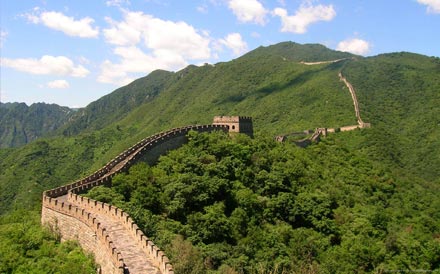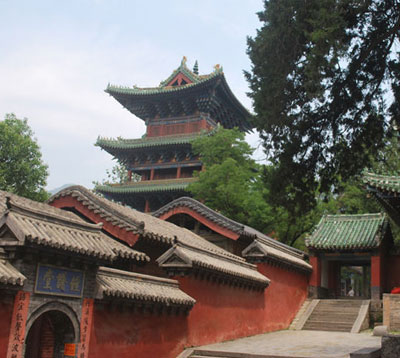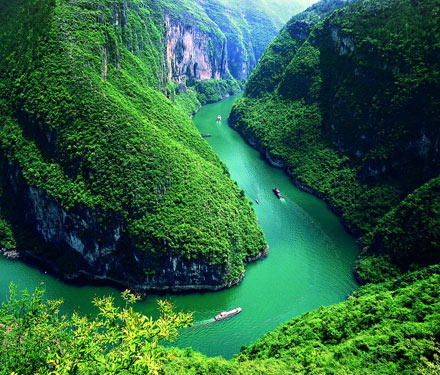China
Country statistics

Land area: 3,600,927 sq miles (9,326,411 sq km)
Total area: 3,705,407 sq miles (9,596,960 sq km)
Population (2011 est.): 1,336,718,015 (growth rate: 0.493%); birth rate: 12.29/1000; infant mortality rate: 16.06/1000; life expectancy: 74.68
Capital City: Beijing
Monetary unit: Yuan/Renminbi
Languages: Standard Chinese (Mandarin/Putonghua), Yue (Cantonese), Wu (Shanghaiese), Minbei (Fuzhou), Minnan (Hokkien-Taiwanese), Xiang, Gan, Hakka dialects, minority languages
Ethnicity/race: Han Chinese 91.9%, Zhuang, Uygur, Hui, Yi, Tibetan, Miao, Manchu, Mongol, Buyi, Korean, and other nationalities 8.1%.
Religions: Officially atheist; Christian 3%-4%; Daoist (Taoist), Buddhist, Muslim 1%-2%. (2002 est.)
Country introduction

China is a country in East Asia and is bordered by twelve countries, Korea in the east, Russia in the north-east and the north-west, Mongolia in the north, India, Pakistan, Bhutan and Nepal in part of the west and south-west, Myanmar, Laos and Vietnam in the south. It is the world's most populous country, with a population of over 1.3 billion.
China's diverse land include plateaus, plains, basins, foothills, and mountains and is a country of great contrasts, with picturesque rural landscapes and congested cityscapes. It is divided into three geographic regions which include the mountains to the west, the various deserts and basins in the north-east and the low lying valleys and plains in the east.
Most of China consists of mountains and plateaus such as the Tibetan Plateau which leads into the Himalayan Mountains and Mount Everest. Out of the world's twelve high peaks of more than 8,000 m (26,246 ft), seven are located in China. The Highest peak in the world, Mount Everest stands at 8,848 m (29,029 ft) and is located on the border between China and Nepal.
Northern and north-western China has a large desert known as the Gobi Desert, which is also shared with Mongolia. The Gobi Desert is an unforgiving terrain with extreme temperatures, minimal water or vegetation and high winds with little shelter. Due to the large plateau residing at approximately 1,524 m (5,000 ft) above sea level, the temperature can drop to -40°F in the winter, and rise to 142°F in the summer. The Gobi also experiences frequent heavy winds of up to 85 mph in the spring and fall. The majority of the Gobi desert floor is bare rock. The Gobi is most notable in history as part of the great Mongol Empire, and as the location of several important cities along the Silk Road.
Rivers also play a major role in China, both for transportation and for irrigation. Much of the northern wheat fields and southern rice fields are irrigated from rivers. The inland river system accounts for 36% of the total land area in China. Two of the world's longest rivers can be found in China. The Yangtze River is the longest river in China and the third longest in the world, with a total length of 6,300 km (3,914 miles). The yellow river is the second longest river in China, with a total length of 5,464 km (3,395 miles).
The culture

China is a large country, home to billions of people. People in China focus on a different religion all together. They practice Buddhism, a religion that centers around the teachings of the Buddha, a prince of the Sakya tribe in Nepal. The principles of his religion are based on his wisdom and discoveries. It teaches to be humble and to not ignore the suffering of others.
Dragons are deeply rooted in Chinese culture, so Chinese often consider themselves, "the descendants of the dragon".
Special occasions include festivals and holidays like the Chinese New Year, which are celebrated with family, food, fireworks, and lots of red and gold for good luck.
For centuries China has stood as a leading civilization, outpacing the rest of the world in the arts and sciences.
Attractions & landmarks

China has a large number of wonderful tour destinations from it's charming rivers to gargantuan mountains, from delicate water towns to solemn imperial palaces, from the splendid national cultural heritage sites to colorful folk customs.
To get the best profile of China, the city of Beijing, Shanghai and Xian should be visited.
The well-known Great Wall of China, Forbidden City, Summer Palace and Temple of Heaven describe the long and gorgeous history of capital Beijing. In contrast the less old Beijing Hutongs of local residential area have turned into characteristic pedestrian streets with trendy shops and bars.
Shanghai has become a worldwide well-know metropolis in fifty years during the last century. Standing on the Bund of Huangpu River, the city's rapid development and great changes on the two banks can be seen. In the west bank, a lot of Western-style buildings have been built that are full of exotic flavor, while on the east bank, rows of skyscrapers spring up and rise above the clouds.
Xian should be the most shining pearl on the Yellow River along which the ancient Chinese culture originated. The astonishing Terra-cotta Warriors and Horses of Emperor Qin Shihuang were excavated in this city and the famous Silk Road started here via brilliant Dunhuang to Europe thousands of years ago.
Winding through eleven provinces and cities, Yangtze River is the longest river in China. Comparatively, the picturesque Li River in Guilin is more restrained and the beautiful West Lake in Hangzhou is well cultivated. Various kinds of folk cutoms and landscapes are also formed along these rivers. The cradle of Yangtze River is on the mysterious Qinghai-Tibet Plateau where the holy Potala Palace can be seen, along with the snow-capped Mt. Everest and the heavenly Namtso Lake. When the river comes to the lower Sichuan Basin, there are cute giant pandas and multicolored water of Jiuzhaigou Valley. Mt. Huangshan which is situated at the down stream of Yangtze River
The Shaolin Temple is probably the most famous temple in China, not only because of its long history and its role in Chinese Buddhism, but also because of its martial arts or Wushu Chan. The Shaolin Temple is situated in the beautiful Songshan Mountains.